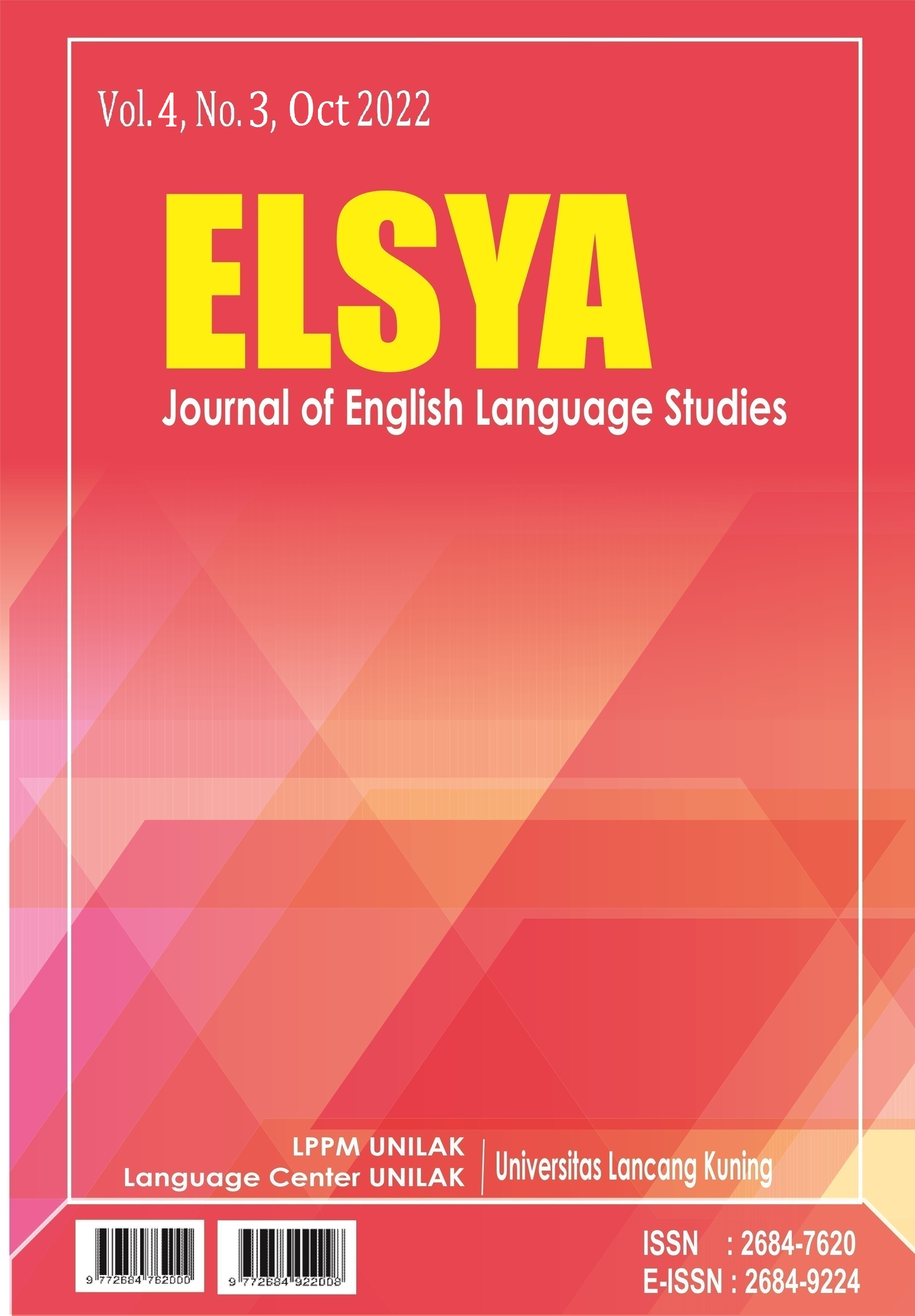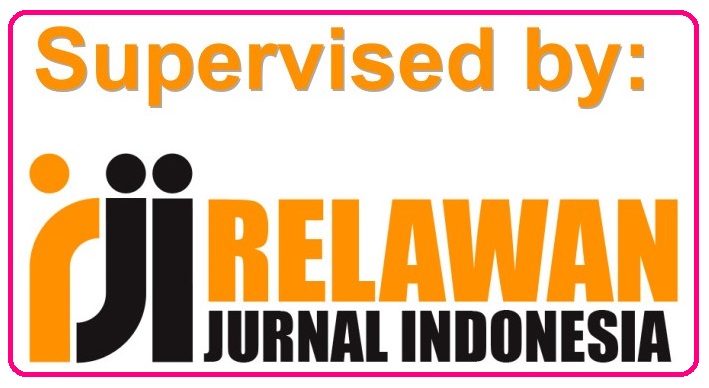Donald J. Trump’s Protest Response: Rhetorical Language of His Speech at the “Save America” Rally
DOI:
https://doi.org/10.31849/elsya.v4i3.10419Keywords:
Discourse Analysis, Donald J. Trump, Protest Speech, Rhetoric, U.S. Presidential ElectionAbstract
Language is deliberately utilized by politicians. Admittedly, it can perform a purposive function: to achieve the politicians’ goals crucially in attempt to gain people’s support. This study is interested in the current political context in the U.S. In the 2020 U.S. presidential election, Donald J. Trump lost in his second election. He, therefore, delivers his response of objection at the “Save America” rally in Washington, D.C. This study is targeted to explore a political speech from the defeated candidate perspective. Recently, rhetorical language in political discourse has been commonly analysed. However, this study contributes to an analysis of rhetorical strategy used in an informal, implicit, and pursuing to protest speech by Trump. This study is designed by a descriptive qualitative approach. The data is the speech text of Trump’s speech on 6th January 2021. Technique of data collection undertakes observation of the speech and the transcript, categorization, and coding. The grand theories include Teun van Dijk’s discourse theory (1980) and Reisigl political speech’s schemes (2008). The results indicate that repetition has become Trump’s most potent strategy in his protest speech. Seemingly, he prefers to utilize the devices that are beneficial for him to emphasize something good about Us and emphasize something bad about Them. This is crucial for him since from the defeated side, it can impress the Republicans to support his objection. Nonetheless, Trump’s capability to persuade the Republicans has caused an impulse, anarchic and illegal movement, which is contrary to their ideal vision to the country.
References
Al-abbasi, Z. H. K. (2022). Rhetorical Questions as a stylistic device in English political speeches. Eurasian Journal of Research, Development and Innovation, 7, 22–29.
Alshammari, M. E. (2020). A critical discourse analysis: Examining Donald Trumps political speeches. International Journal of Advanced Research, 8(7), 516–520. https://doi.org/10.21474/ijar01/11311
Anderson, C. J., Blais, A., Bowler, S., Donovan, T., & Listhaug, O. (2005). Losers’ consent: Elections and democratic legitimacy. Oxford University Press, Inc.
Baker, P. (2006). Using Corpora in Discourse Analysis. Continuum.
Ballotpedia. (2016). Election results 2016. https://ballotpedia.org/Election_results,_2016
Ballotpedia. (2020). Presidential candidate 2020. Ballotpedia. https://ballotpedia.org/Presidential_candidates,_2020
Beard, A. (2001). The language of politics. Taylor & Francis.
Capitol riots: Did Trump’s words at rally incite violence? (2021, February 14). BBC. https://www.bbc.com/news/world-us-canada-55640437
Chilton, P. (2004). Analysing political discourse: Theory and practice. Routledge.
Craig, S. C., Martinez, M. D., Gainous, J., & Kane, J. G. (2005). Winners, losers, and election context: Voter responses to the 2000 presidential election. Political Research Quarterly, 59(1), 579–592. https://doi.org/https://doi.org/10.1177%2F106591290605900407
Derakhshani, M., Qaiwer, S. N., Kazemian, B., & Mohammadian, S. (2021). Critical discourse analysis and rhetorical tropes in Donald Trump’s first speech to the UN. Theory and Practice in Language Studies, 11(10), 1224–1236. https://doi.org/10.17507/tpls.1110.10
Eriyanto. (2015). Analisis wacana: Pengantar analisis teks media. PT. LKiS Printing Cemerlang.
Fahnestock, J. (2011). Rhetorical style : The uses of language in persuasion. Oxford University Press, Inc.
Foucault, M. (1981). Orders of discourse. In R. Young (Ed.), Untying the text. Routledge & Kegan Paul.
Heigham, J., & Croker, R. A. (Eds.). (2009). Qualitative research in applied linguistics: A practical introduction. Palgrave Macmillan.
Huda, M. F. N., Hidayat, D. N., & Alek. (2020). An Investigation of macrostructure, superstructure, and microstructure on online news text. NOBEL: Journal of Literature and Language Teaching, 11, 149–161. https://doi.org/10.15642/NOBEL.2020.11.2.149-161
Kazemian, B., & Hashemi, S. (2014). Critical discourse analysis of Barack Obama’s 2012 speeches: Views from systemic functional linguistics and rhetoric. Theory and Practice in Language Studies, 4(6), 1178–1187. https://doi.org/10.4304/tpls.4.6.1178-1187
Khajavi, Y., & Rasti, A. (2020). A discourse analytic investigation into politicians’ use of rhetorical and persuasive strategies: The case of US election speeches. Cogent Arts and Humanities, 7(1). https://doi.org/10.1080/23311983.2020.1740051
Luo, X., He, M., & Yu, Z. (2021). An ideological analysis of the former president Donald Trump’s tweets during COVID-19. Corpus Pragmatics, 6(1), 23–38. https://doi.org/10.1007/s41701-021-00113-4
Maghfiroh, A., & Triyono, S. (2020). The ideological embodiment on Nadiem Makarim’s speech: A critical discourse analysis. Indonesian Journal of EFL and Linguistics, 5(1), 97. https://doi.org/10.21462/ijefl.v5i1.229
Mascaro, L., Tucker, E., Jalonick, M. C., & Taylor, A. (2021, January). Pro-Trump mob storms US capitol in bid to overturn election. AP News. https://apnews.com/article/congress-confirm-joe-biden-78104aea082995bbd7412a6e6cd13818
Nugraha, R. (2014). A Critical Discourse Analysis on Hillary Clinton’s Speech “American for Marriage Equality.” State Islamic University Syarif Hidayatullah Jakarta.
Ott, B. L. (2017). The age of Twitter: Donald J. Trump and the politics of debasement. Critical Studies in Media Communication, 34(1), 59–68. https://doi.org/10.1080/15295036.2016.1266686
Paltridge, B. (2012). Discourse Analysis An Introduction (2nd ed.). Bloomsbury.
Perangin-angin, A. B., Putri, D. M., Jalil, Z. A., Sibarani, R., & Lubis, T. (2021). The representation of indonesia woman: Critical discourse analysis in political speech. Review of International Geographical Education Online, 11(3), 577–587. https://doi.org/10.33403/rigeo.800523
Pradiptha, W. A., Purwati, T., & Hadiati, C. (2020). Reflection of ideology: A critical discourse analysis of Donald Trump’s declaration speech of Jerusalem as capital city of Israel. J-Lalite: Journal of English Studies, 1(1), 22. https://doi.org/10.20884/1.jes.2020.1.1.2715
Proctor, K., & Su, L. I. W. (2011). The 1st person plural in political discourse-American politicians in interviews and in a debate. Journal of Pragmatics, 43, 3251–3266. https://doi.org/10.1016/j.pragma.2011.06.010
Rachman, A; Yunianti, S. (2017). Critical Discourse analysis in Donald Trump presidential campaign to win American’s heart. TELL Journal, 5(2), 8–17. https://doi.org/http://dx.doi.org/10.30651/tell.v5i2.388
Rahayu, F. E. S., Susilo, S., & Sunardi, S. (2018). Persuasive power as reflected by rhetorical styles in political speeches: A comparative study of Barrack Obama and John Mccain. CaLLs (Journal of Culture, Arts, Literature, and Linguistics), 4(2), 115. https://doi.org/10.30872/calls.v4i2.1360
Reisigl, M. (2008). Rhetoric of political speeches. In R. Wodak & V. Koller (Eds.), Handbook of Communication in the Public Sphere (pp. 243–269). Walter de Gruyter GmbH & Co. KG.
Rohmah, S. N. (2018). Critical Discourse Analysis of Donald J Trump’s Speeches. The State Islamic University of Sunan Ampel Surabaya.
Sahmeni, E., & Afifah, N. (2019). Using Critical Discourse Analysis (CDA) in Media Discourse Studies: Unmask the Mass Media. REiLA : Journal of Research and Innovation in Language, 1(2), 39-45. https://doi.org/10.31849/reila.v1i2.2764.
Savoy, J. (2017). Trump’s and Clinton’s style and rhetoric during the 2016 presidential election. Journal of Quantitative Linguistics, 25(2), 168–189. https://doi.org/10.1080/09296174.2017.1349358
The U.S. National Archives and Records Administration. (2019a). Electoral college. The U.S. National Archives and Records Administration. https://www.archives.gov/electoral-college/history#whyec
The U.S. National Archives and Records Administration. (2019b). What is the electoral college? The U.S. National Archives and Records Administration. https://www.archives.gov/electoral-college/about
The U.S. National Archives and Records Administration. (2020). Electoral college timeline of events. The U.S. National Archives and Records Administration. https://www.archives.gov/electoral-college/key-dates
Thomas, L., & Wareing, S. (2003). Language, society and power: An Introduction. Routledge.
Tian, L. (2021). Critical discourse analysis of political discourse — A Case Study of Trump’s TV speech. Theory and Practice in Language Studies, 11(5), 516–520. https://doi.org/10.17507/tpls.1105.08
Titscher, S., Meyer, M., Wodak, R., & Vetter, E. (2000). Methods of text and discourse analysis: In search of meaning. SAGE Publications.
van Dijk, T. A. (1980). Macrostructures : An interdisciplinary study of global structures in discourse, interaction, and cognition. Lawrence Erlbaum Associates.
van Dijk, T. A. (2000). Ideology: A multidisciplinary approach. SAGE Publications.
van Dijk, T. A. (2008). Discourse and context: A sociocognitive approach. Cambridge University Press.
Widiatmika, P. W., Budiarsa, I. M., & Sadia, I. G. (2020). Rhetorical schemes in Barack Obama’s winning speech. Humanis, 24(4), 394–401. https://doi.org/10.24843/jh.2020.v24.i04.p07
Wodak, R. (Ed.). (1989). Language, power and ideology. Studies in Political Discourse (Vol. 7). John Benjamins Publishing Company.
Woods, N. (2006). Describing discourse: A practical guide to discourse analysis. Hooder Arnold.
Yaqin, M. Z. N. (2017). Representasi ideologi dalam struktur wacana kata hari ini. LiNGUA: Jurnal Ilmu Bahasa Dan Sastra, 12(2), 99–109. https://doi.org/https://doi.org/10.18860/ling.v12i2.4056
Yaqub, U., Chun, S. A., Atluri, V., & Vaidya, J. (2017). Analysis of political discourse on twitter in the context of the 2016 US presidential elections. Government Information Quarterly, 34(4), 613–626. https://doi.org/10.1016/j.giq.2017.11.001
Downloads
Published
Issue
Section
License
- Author retains the copyright and grants Elsya Journal the right of first publication of the work simultaneously licensed under the Creative Commons Attribution-ShareAlike 4.0 License that allows others to share the work with an acknowledgment of the work's authorship and initial publication in this journal
- The author is able to enter into separate, additional contractual arrangements for the non-exclusive distribution of the journal's published version of the work (e.g., post it to an institutional repository or publish it in a book) with the acknowledgment of its initial publication in this journal.
- The author is permitted and encouraged to post his/her work online (e.g., in institutional repositories or on their website) prior to and during the submission process, as it can lead to productive exchanges, as well as earlier and greater citation of the published work (See The Effect of Open Access).












 Elsya Journal is licensed under
Elsya Journal is licensed under 